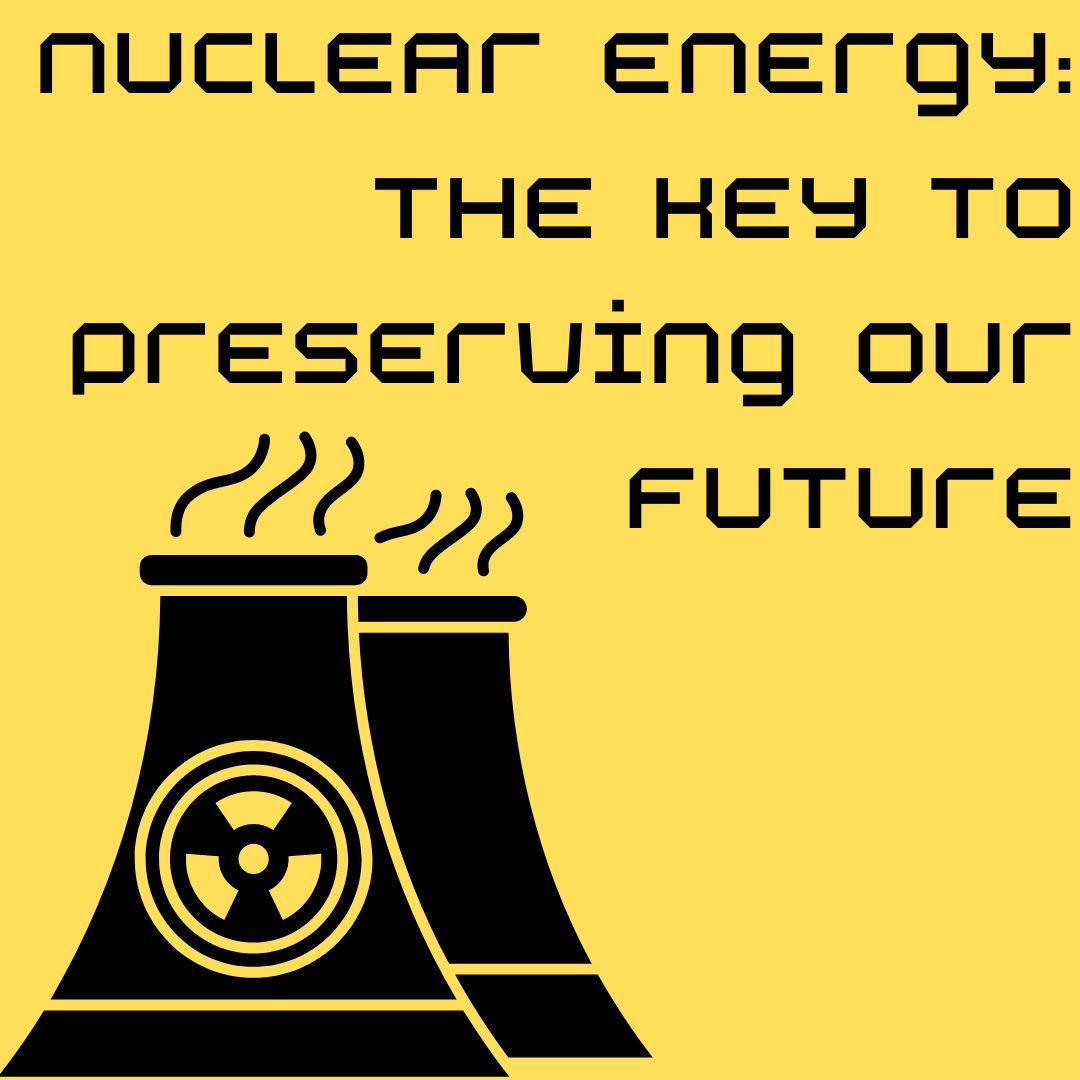Energy is an essential resource in today’s world, powering sectors from education to agriculture. However, energy generation requires a substantial amount of resources in order to meet the needs of society.
According to the Environmental and Energy Study Institute, “about 80 percent of energy is produced via fossil fuels.” The supply of fossil fuels found on earth is steadily waning, as it is a finite resource. Humanity needs to find a better way to generate power, and nuclear energy is the solution.
Nuclear power is any form of energy that use of either nuclear fission or fusion. The only nuclear power possible with current technology is fission, which involves splitting a heavy atom into smaller atoms and generating heat energy which can be converted into electrical energy.
The proprietary reason to push for nuclear power is its environmental impact. When fossil fuels are burned, they release carbon dioxide gas. This then gets trapped in the atmosphere, leading to a “greenhouse effect” which traps heat and warms the earth. Nuclear energy is a zero-emissions energy source and does not have a profound impact on the environment.
The economic benefits are also a compelling reason to make the switch. A study by the Nuclear Energy Agency found that roughly 20,000 labor years are produced in the span of a nuclear Reactor’s life. A separate study found that the average salary for nuclear workers can be 30% higher than the local average.
Fission Energy’s fuel sources—thorium and uranium—are also depletable. However, they are very energy-dense materials, meaning they can store and therefore release a large amount of energy even in small quantities. This means it will not run out nearly as fast as fossil fuels.
Emerging technologies in the sector only add to the viability of nuclear energy. Nuclear Fusion, often considered the “holy grail” of science and renewable energy, has seen recent promise. Prior to just a few years ago, fusion was only possible in the cores of stars and in hydrogen bombs. Researchers were then able to replicate it in a reactor setting. In December of 2022, net gain (more energy was output by the reaction than was required to jumpstart it) was achieved for the first time.
The development of nuclear fusion into reactors which could run continuously would provide a nearly limitless source of energy. Nuclear fusion reactions require only helium and/or hydrogen, gasses which make up much of earth’s atmosphere and oceans.
Though beneficial, criticism against nuclear power still arises due to the risk of nuclear accidents. Disasters like Chernobyl and Fukushima have tainted the public’s image of nuclear energy. Events such as these release harmful radioactive isotopes into the environment which can cause cancer and other health issues. Issues like these, though, are not as common as some are led to believe. A study published in the Bulletin of Atomic Scientists discovered the statistical probability of a nuclear meltdown to be an estimated one in every 3,704 reactor years, longer than humans have utilized nuclear energy.
It is important that nuclear energy is advocated for in order to ensure energy security for years to come. By lobbying lawmakers and industry leaders, a brighter future can be ensured for future generations.









